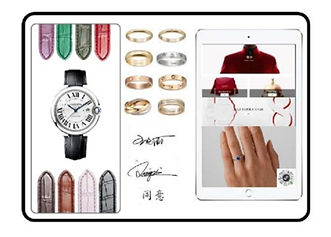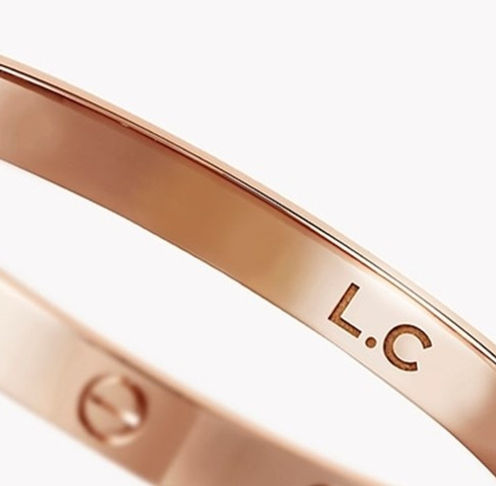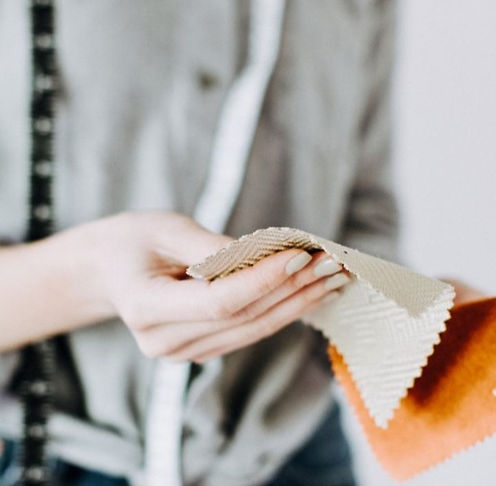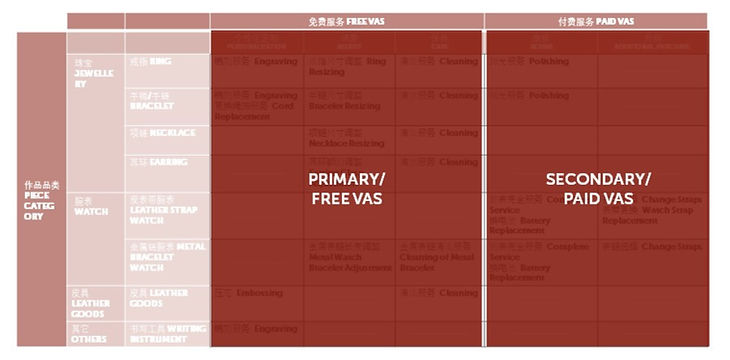Retail Research in Action
/
Optimizing Cartier's
Customer Experience
Project: VAS Playboard
Brand: Cartier
Year: 2021
#ServiceDesign #RetailExperience #CustomerJourney #LuxuryGoods

Personalization and customization is a key driver in luxury retailing, thus there are many Cartier Value Added Services that will be extended to client purchase experience and after purchase service. Such as personal signature engraving, change of watch straps, necklace length extension, plus many more.
However, many customers do not know the existence of Value Added Service as Cartier currently does not have promotion on those service. As part of new retail initiative, this project is aiming to bring the invisible to the visible.

This project is aimed to design tools or products that could help Cartier Staff bring awareness and drive client engagement with extended services within the boutique; before, during and after purchase.

We began this project with in-depth research, immersing ourselves in the Cartier boutique experience. Guided by the store associates, we walked through the entire customer journey firsthand—trying on jewelry, understanding the flow of engagement, and even stepping into their VIP room to experience the personalized service. This allowed us to grasp the brand’s attention to detail and the emotions embedded in every step of the luxury retail experience.

Back in the studio, we meticulously documented every step of our boutique experience onto a customer journey map. This process allowed us to break down each customer touchpoint, analyzing where opportunities might exist to introduce value-added services. By mapping out the journey in detail, we could identify moments that could be enhanced to elevate the luxury experience even further.

We identified two key insights.
First, we observed the specific moments when sales associates currently introduce value-added services. This presents an opportunity to refine and optimize how these services are communicated, ensuring a more seamless and engaging experience.
Second, we noticed that throughout the purchasing journey, there are natural waiting periods for customers. These moments provide an excellent opportunity to introduce value-added services in a way that feels organic and enhances their overall boutique experience.

According to one key finding from interview, it is difficult for customers to picture the color of watch straps or effect of jewelry engraving in the reality if they only see the digital images and listen the verbal explanation from Cartier staff. Customers normally ask to see the samples for every personalize service.

The user need remind us an inspiration that furniture design store like IKEA normally will provide real material chips or samples for customers to imagine the color matching of furniture or to touch the material in order to easily picture the real effect in their mind. It can help clients make better decisions when they personalize their own pieces.

This insight led us to explore ways to make all value-added services (VAS) more tangible and experiential for customers. We conceptualized the VAS Playboard, a physical display where customers can touch, feel, and interact with different service offerings, enhancing their sensory engagement with the brand.
To complement this, we incorporated a tablet display, providing detailed information about each VAS, along with the stories behind them. This combination allows customers to not only experience the services firsthand but also gain a deeper understanding of their craftsmanship and significance.

From our interviews, we learned that there are typically two scenarios in which store associates introduce VAS to customers. The first scenario occurs when customers are waiting or in line, where the associate may need to hand-hold the Playboard to showcase the services. The second scenario takes place at the counter, where the Playboard is placed on the counter for display and presentation.


On the other hand, through our interviews with sales associates, we discovered that value-added services (VAS) can be categorized into two types: complimentary services, such as watch strap cleaning and ring engraving, and paid services.
The key insight from these interviews was that sales associates tend to actively promote complimentary services, as customers are generally more receptive to them. In contrast, paid services are often only briefly mentioned to avoid coming across as too pushy. Sales associates typically wait for customers to express interest before providing more details about these offerings.

Based on these insights, we structured the VAS Playboard into two distinct sections: Primary and Secondary.
The Primary section prominently showcases free services, ensuring they are the first to catch the customer’s attention.
The Secondary section features paid services, which remain subtly concealed, only revealed when needed—allowing store associates to introduce them naturally without making the interaction feel too sales-driven.

In the ideation phase, we conducted a co-creation workshop with Cartier's retail design team to explored different ways to present the samples and experimented with mechanisms that could seamlessly switch between these two sections. Our goal was to create an engaging, intuitive display that enhances the customer journey while aligning with Cartier’s luxury experience.



Our team transformed the most feasible concepts into mock-ups and tested them in collaboration with Cartier stakeholders. By simulating real-world interactions, we gained valuable insights into ergonomics, ease of use, and customer engagement, ensuring that the playboard seamlessly integrates into luxury retail experience.


Ultimately, we decided to use a sliding cover mechanism to reveal and hide the primary and secondary VAS, based on the insights we gathered earlier. This mechanism ensures smooth transitions between the two service categories. We also considered how the associate would hold the Playboard and how it could be conveniently charged at the counter for the tablet. Above all, we focused on creating an elegant display for the samples, drawing inspiration from the sophisticated design of display counters to ensure a seamless and luxurious experience for the customer.





